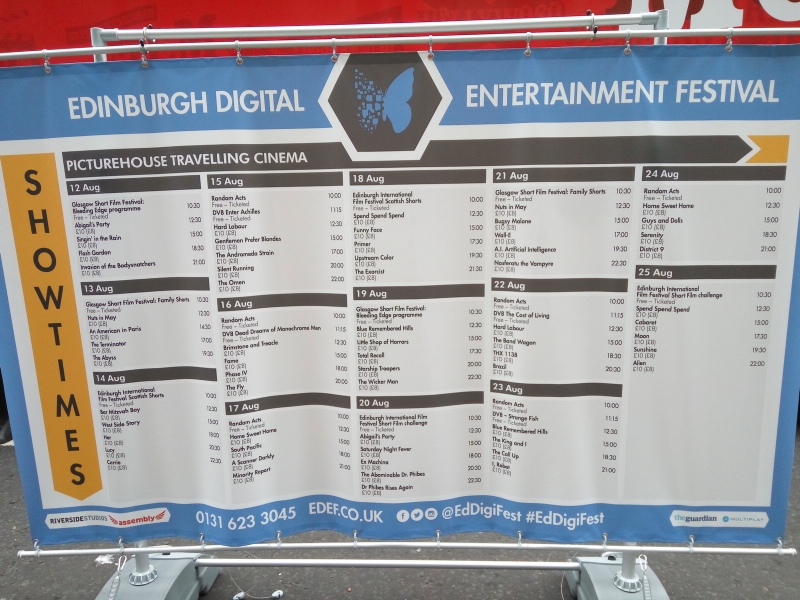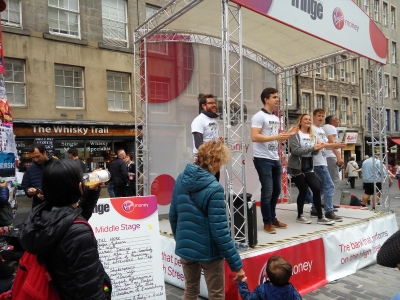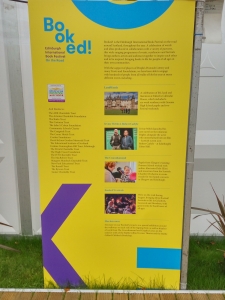Edinburgh Festival has been a cultural brand in the arts industry for ages. Going to the Festival seems like a pilgrimage for any arts practitioner. Having wanted to go there for over a decade, I finally set my foot on Edinburgh this summer from August 22-29 trying to discover its mystery.
Edinburgh Festival, at first, for me, meant only the Edinburgh International Festival (which is similar to Hong Kong Arts Festival, presenting prestigious works from local and overseas) and Fringe Festival (featuring artists with works more experimental in nature). It was only during research for the trip that I realized Edinburgh Festival is the brand name for the whole city, which umbrellas twelve established festivals over nine months annually. They include the Edinburgh’s Hogmanay, Edinburgh International Science Festival, Imaginate Festival, Edinburgh International Film Festival, Edinburgh Jazz and Blues Festival, Edinburgh Art Festival, Edinburgh International Festival, Edinburgh Festival Fringe, The Royal Edinburgh Military Tattoo, Edinburgh International Book Festival, Edinburgh Mela and the Scottish International Storytelling Festival. The spectrum of festivals stretches from traditional to contemporary, arts to science, engaging children to adults to professionals.
The intention of the city of Edinburgh to project to the world its identity as a Festival City (www.edinburghfestivalcity.com) is evident.
Creation of its own Ecology
Among the twelve festivals, seven of which are held in the summer period of July and August, which has the most desirable weather for visiting Edinburgh. I have made my visit to their International Festival, Festival Fringe, Book Festival and Art Festival during my one-week stay.
Among the festivals, the Festival Fringe is the most exciting in terms of its scale, dynamics and diversity of its programs.
According to the Edinburgh Festival Fringe Society which presents the festival, this year, artists and performing arts companies came from 48 countries, providing a total of 50,266 performances of 3,269 shows shown in 294 venues, with an estimated 2.5 million tickets issued, reflecting a 7.7% increase in tickets issued compared with last year. Along with the ticketed performances, there are also a total of 643 free performances in the three-and-a-half week’s festival.
Types of performances include Cabaret and Variety, Children’s Shows, Comedy, Dance, Physical Theatre and Circus, Music, Musical, Opera, Theatre and more. Among all, Comedy contributes the majority of the productions, which could be understood, as a one-man band is the most flexible for touring both physically and financially. With the numerous performances presented, some of the venues held more than 100 performances during the whole period, with performances starting as early as 10am in the morning, until 11pm at night.
With such massive productions going on, artists and companies need to attract their audiences on the street as a marketing effort. The organizer has set up 3 pop-up stages along The Royal Mile, the historical street in the centre of the city, connecting right to the Edinburgh Castle, featuring different companies in the festival, allowing them to provide teasers of their productions for passersby.
Apart from these official platforms, companies also produce very creative promotion campaign along the street. Some were seen dressed in exaggerated costumes; some would create a statue and react only when passersby took a leaflet from them, all aiming at standing out from the crowd in such competitive edge. This vivid scene, created a carnival right in the centre of the city, helping to create the dynamic both inside the venues and outside on the street.
Reacting to the numerous productions, the critic system was also born to assist the audience with their choices within the limited time resources. The festival also developed its own award system, presenting 26 categories of awards to outstanding productions, in recognition of their quality and reception.
The Festival Fringe is also a famous platform for individual artists and performing arts groups to showcase their productions and to attract presenters world-wide. Together with the International Festival (both of them will be in their 70s next year) and the busking happening on the streets, it is creating different platforms for artists and companies of different experience and levels to participate, and a pathway to promote themselves to a further stage (of course, the gap from the Festival Fringe to the International Festival is large, as the programs in the International Festival are few and highly selected).
It is also observed that with the enormous participants involving in these festivals and events -- artists, production team of companies, presenters, critics, judges and others, they are already creating an ecology which could suffice a life of its own.
Immersion into the city fabric
Apart from the existing twelve festivals, Edinburgh Festival is expanding its territory by initiating new festival. The Digital Entertainment Festival was launched this year, presented by the Riverside Studios, in exploration of the connections between performing arts and technology. It engaged the local communities by collaborating with local universities and private companies in producing contents for the festival.
Other than considering expanding the width of the Festival, the Festival is also extending its depth by initiating different projects throughout the year, aiming to sustain the interest of the participants and to raise awareness of new participants to the festivals.
The Edinburgh International Book Festival, in extension to their 3-week festival in August, also place podcasts and videos of talks and conferences in their websites. In promotion of new writings and writers, they also commissioned new writings and let the readers read them on their website.
In addition, for their school educational programs, they have the Booked! Outreach program which brings the book experience to the students throughout Scotland in a multi-dimensional way, including author presentations, readings, creative writing, illustration workshops and mini literary festivals. They also worked in long-term creative projects partnering with other Scottish arts organizations.
Programs in the Booked! Outreach program
Of course, the proximity of the numerous venues facilitates the immersion of the festival into the city of Edinburgh. Most venues are within 2 kilometers from the city centre (about 30mins of walking distance). This certainly facilitates participants to walk from one venue to another to catch a show of just an hour or less away.
How the citizens view the Festival also contribute to their success. With my experience staying at an Airbnb and talking to the locals about the Festival, they reflected that they are quite proud of them, and have also participated by watching the Opening Event of the International Festival Deep Time, which is an outdoor public art performance created by the Tony award-winning 59 Productions and music by the Scottish band Mogwai, in narration of the local history of Edinburgh by projecting animations onto the natural backdrop of the Edinburgh Castle, which created a deep connection with the local citizens.
Reinvention in the making
With the underperformed economic growth in Europe and Scotland, one would question about the growing status of the Edinburgh Festival. Yet according to an interview with Julia Amour, the Director of Festivals Edinburgh , the earned income across all the festivals rose by more than 30% between 2010 and 2015.
This increment is amazing, and one would wonder how the festivals, with two of them approaching its 70th anniversary still manage to sustain its growth.
‘Reinvention’ is the key to the success, as Julia Amour put it “Edinburgh’s festivals reinvent themselves every year” by creating new collaborations both locally and internationally, in order to reach out to their existing audience as well as to attract new audiences, and to create new ways to engage them better.
Some initiatives include continuously building their digital infrastructure. They collaborate with Scottish Enterprise, Creative Scotland and Innovate UK to create a platform to assist companies to prototype new products, software and services.
The Festival also collaborated with the University of Edinburgh on their vision to create a digital arts arena connecting the Edinburgh College of Art and the School of Informatics, which will be focusing on producing live digital broadcast and recorded performances, to enable performers to collaborate and interact with audiences in new ways.
Internationally, the Festival is transporting its cultural brand to different parts of the world, in order to spread its influence in the world arena.
The Edinburgh International Science Festival runs an annual Science Festival in Abu Dhabi. The Royal Edinburgh Military Tattoo also has its chapters in Australia and New Zealand in the winter of 2016, and were well received. The Festival is therefore planning for further tours in the Middle East and China in the next few years.
In order to establish new connections in the presenters’ level, the Book Festival established the Word Alliance, bringing together the world’s leading literature festivals, in order to present their authors across the globe. As for the Festival Fringe, it has also created the World Fringe Congress in 2012, and has just held the Congress for first time outside Scotland in Montreal in Nov 2016.
In this trip, I am trying to discover the thinking minds behind the vivid city scene created by the Festival, and how the continual strive for improvement has worked for the Festival. Also is observed is how the Festival has highly engaged their Scottish artists and local community in making the Festival “deeply Scottish yet profoundly international”.
作者簡介:資深藝術行政及舞蹈教育工作者。一九九九年獲亞洲文化協會(香港)利希慎獎助金往紐約大學修讀舞蹈藝術碩士;自一九九九年開始為學校舞蹈節擔任評判至今。
照片由作者提供







